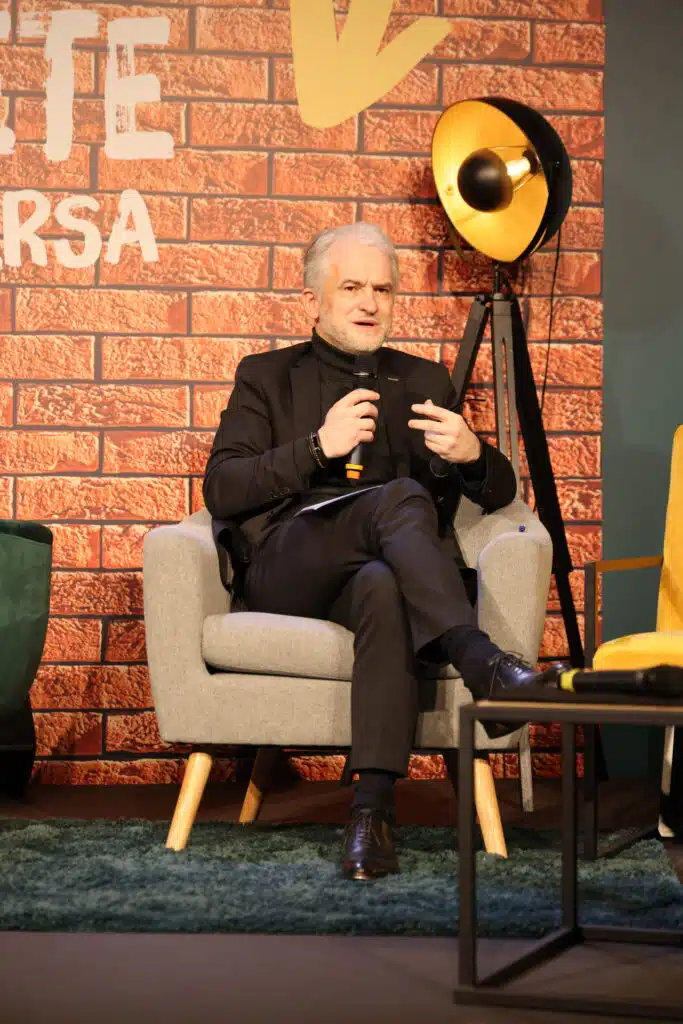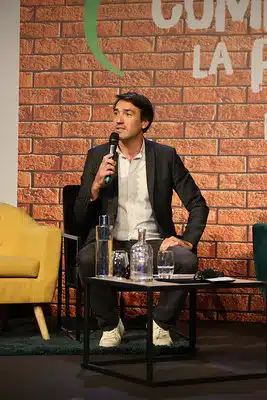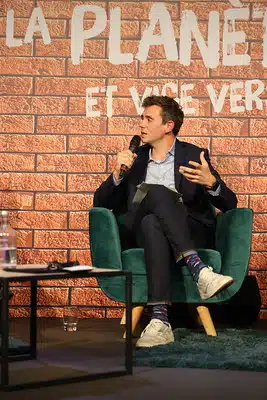With great enthusiasm and an optimistic approach, conference 13B’s speakers displayed concrete examples, demonstrating how and to what extent local action and bottom-up initiatives have considerably changed economies in their communities. Marie-Hélène Foubet, from France, Rob Hopkins, from England and Luciano Marcos Silva, from Brazil, all work along with individuals and populations, on a local scale, to make great changes on a wider one.
People as key actors
“The inhabitant at the heart of everything” is Marie-Hélène Foubet’s work central idea. Currently headmistress of Groupe SIA Habitat, an innovative real estate company, Foubet solves socio-economic challenges by making accommodations adapted to the territory and to their future residents. Before initiating further phases, she gets deeply involved in the needs and desires of the people who are going to occupy the installations – focusing on individual requirements. The notion of ‘client’ is then blurred, while the notion of ‘inhabitant’ is deepened and emphasized.
Rob Hopkins, leader and founder of the ongoing social experiment named The Transition Network, further continued the discussion. He considers that communities coming together to reimagine and rebuild our world are essential to surpass the difficulties we face nowadays. One such city is Liège and its ‘Ceinture Alimen-Terre’ project. They undertook the relocation of the agricultural production to transform the city and its link to the periphery, so that the majority of food comes from the land around the urban area.
“Do not invest on banks: invest in the local territory to make things change, impact invest”, he concluded.
The director of the INSEA non-governmental organization, Luciano Marcos Silva, considerably stressed the importance of people in challenge-facing initiatives. This organization changed the economy of the Brazilian region of Minas Gerais by developing a new economic system based on recycling, valorizing and selling residues. In such system, environmental and socio-economic defies are sorted out: work is created, trash gets taken care of and connections between economic agents are created.
Story-telling as a strategy
Powerful stories and narratives invite upper-level actors to engage with the ideas presented by the people. These are all bottom-up initiatives. Hopkins and Silva exemplify such things with individual experiences.
The first did so by recalling the situation of an important milk factory in his home city, Wiltshire. When it shut down, the community requested to settle upon the fate of the facility. To achieve so, the people campaigned for seven years until attaining their goal. Succeeding the municipality acceptation, a consultation took place for a year and a half and five and a half thousand people got involved. Finally, the installation became a museum.
The second one, brokered a federal law in favor of his project in Minas Gerais by the same means. His organization, along with the people, managed to get the recognition of recycling as a job with dignified, human conditions for the macerators.
Therefore, in view of the extent of social and environmental challenges, local action, communities and individuals are essential for the evolution of current and future societies. Not only can they accomplish their purposes on their own, but they can as well engage important actors and impact on a larger range.
Paula Franco



